Color Theory for Seasonal Analysis
Seasonal Analysis uses three elements of color theory: hue, value, and chroma.
Perhaps you’ve heard someone tossing around their color season with words like muted or deep and you have no clue what they are talking about. Maybe you’ve done some research of your own and come across these properties and felt the same confusion. Today’s article is going to answer all your questions about these elements of color theory and how they are applied to seasonal color analysis.
Table of Contents
Color Theory
To understand how color affects our bodies, we need first discuss color theory. In all design areas, color theory comprises three elements: hue, value, and chroma. You can even see these at work in a program like Photoshop.
Hue refers to what we typically consider the name of a color: red, blue, yellow, etc. For the purposes of seasonal color analysis, only two attributes are included: warm and cool. When we look at the Munsell wheel there are certain colors which we would say are definitely warm or definitely cool, but in the majority of cases, we can find warm or cool in any shade.

Cool tones are those with a blue base, and warm tones are those with a red base. Let’s look at the color purple, my personal favorite!

In the center we see what’s called true purple, or secondary purple. This is the color that’s found on the basic color wheel by mixing primary red and primary blue. On the left side, you’ll see what happens when we add red to purple to make it a warm shade. Conversely, on the right, you’ll see how we make purple cool by adding more blue.
Secondary purple we could actually say is neutral, since the mix contains equal parts red and blue. However, this shade of purple doesn’t work well with all skin tones. The reason for this is because of two other factors that make up color analysis: value and chroma.
Value refers to the lightness and darkness of a color. To adjust the value of a color, we add either white (tint) or black (shade). Tint always throws me off, by the way, because I think of tinted windows as being darker, but in the world of color and art it actually means to add white to lighten a color!

So let’s look again at our purple to see what happens when we add light and dark. We still have the original secondary purple in the middle. When we add white on the left and black on the right to show different value levels for our purple.
Finally, chroma is the level of saturation of a color. Chroma is essentially the amount of gray in a color. As we move toward the gray end of the chroma scale the colors become very soft or muted. It is interesting to note that in real life scenarios, colors such as the purple we’ve been using are completely saturated. However, the use of computers actually allows that color to be adjusted with more saturation. So think of the primary/secondary color wheel as being the most saturated when dealing with textiles. Let’s go back to our purple one last time and add some gray.

By mixing these attributes together we could end up with a large number of color options. When we put it together for color analysis, we have something that looks like this:
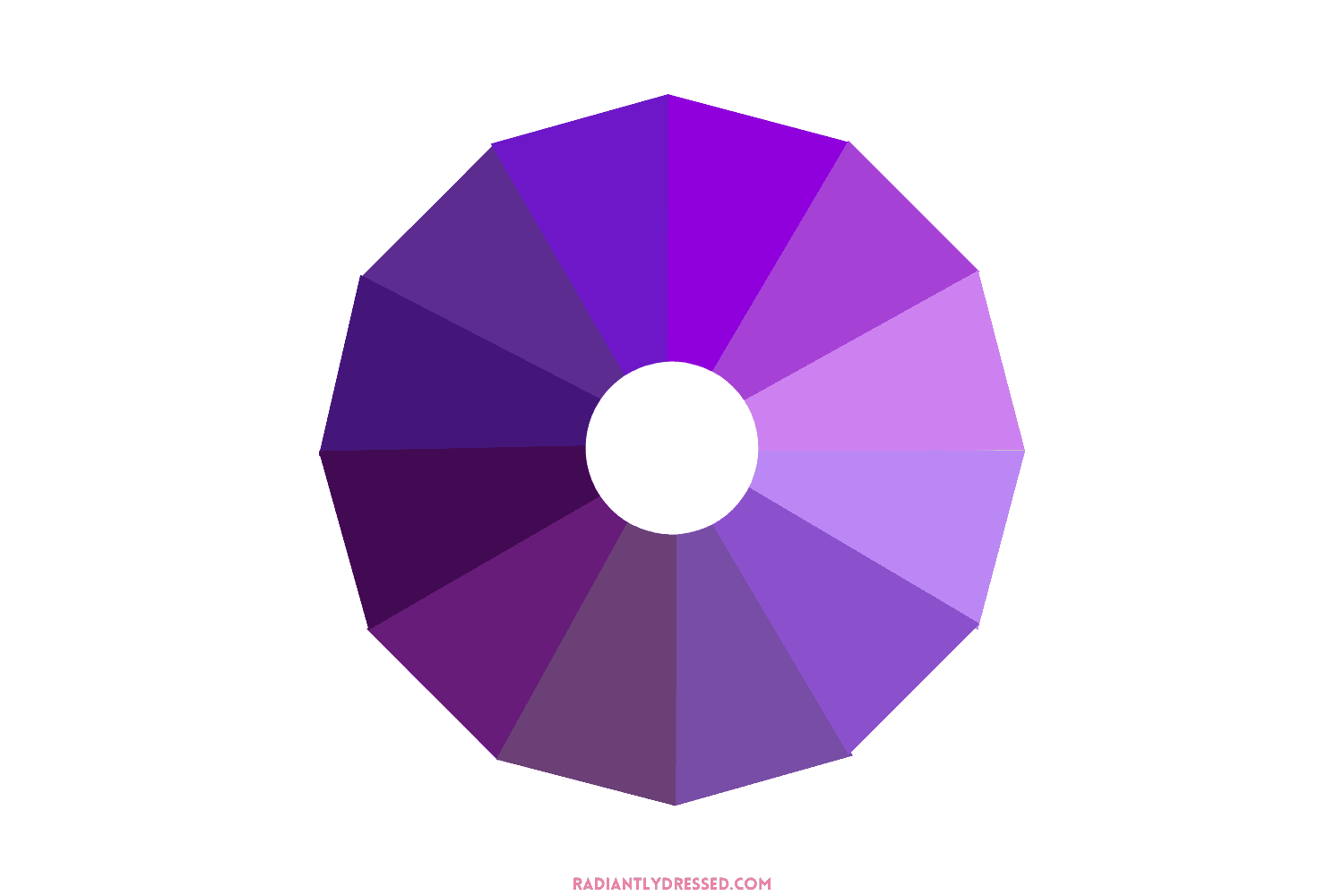
Aha, we also have 12 seasons, so here’s a purple for every season, right?? Maybe! Before claiming a purple for yourself, let’s dig deeper into how the elements of color theory work on a person.
Warm vs Cool
When we begin color analysis we first look to see whether a person is warm or cool. Although the elements are found in the skin, eyes, and hair, the primary consideration for hue is skin. Why is this? Well, because clothing lays against the skin, usually under the face. Our skin reacts to every color we put on based on the undertones of our skin.
I’m going to talk more in depth about skin another time, but to simplify for warm vs cool it is the difference between red undertones and blue undertones.
The eyes are probably the easiest to determine hue! If you have blue eyes, congrats those are most likely cool! Brown eyes, congrats those are warm! Gray is also cool, while hazel is warm. Green eyes can actually go either way. So, if you have blue eyes does that immediately mean you’re a cool season? Well, no! But when looking at your eyes it will probably be the easiest warm/cool decision to make!
Finally the hair is a component of seasonal analysis. I have actually come to believe that hair is the least relevant when it comes to analysis. There are several reasons for this, and it’s primarily because hair is not a fixed color like skin and eyes. All of our features will see some changes as we reach adulthood and then mature. But the hair experiences the greatest changes.
It’s not uncommon for a young child with shocking white blonde hair to have medium brown hair as an adult. Also, outdoor time and sun exposure affect the hair, with most picking up some highlights during this time. Those highlights can be white, gold, or something in between.
Hair can be colored. It loses pigment as we get older. But our season doesn’t change because the colors that work best on us are actually a function of how our skin reacts to them! So yes, we’ll talk about your hair, but it’s more useful in determining secondary characteristic.
Now, let’s talk about the neutrals. Time and time again in color analysis people get stumped because they can’t determine if they are warm or cool. The truth is that out of a 12 season system, only four seasons are 100% cool or warm. That leaves 8 other seasons with some degree of neutrality in one of the features, or a blend of cool and warm. If you find that you can’t easily say that your primary characteristic is warm or cool, then light, dark, bright, and muted becomes options for the primary characteristic.
Secondary Characteristic
“I can’t figure out if I (my skin) is warm or cool.”
Awesome! Join the crowd because sometimes it’s really tough! I have neutral skin so I understand the struggle! Let’s just walk away from the warm vs cool discussion and consider if our three features together tells another story.
I call this the secondary characteristic because warm/cool should be the primary determining factor. But in many cases it is not that simple. We’ve been looking at our features at the micro level, individually by themselves. For the secondary characteristic we will take a step back and view the person in entirety.
We have four other descriptors that could be used to describe a person’s appearance, and those are light, dark, bright, and muted. The first 2 are fairly straightforward and easy to recognize.
Light individuals are colored fair for their ethnicity. Yes, people of color can be light! For those of European descent, the skin is fair and may be either warm or cool, the hair is usually blonde (can be red or brown though), and the eyes are light. In people of color their skin will be lighter than others of their ethnicity, the eyes may be colored or lighter shades of brown, and their hair will be a shade of brown and not black.
Dark individuals have an overall depth to their features. In people of color, this sometimes results in a monotone look between the hair and skin as their features go very deep. Those of European descent can also be dark, having deep brown hair, dark gray or brown eyes, and skin that is darker than others. These people may actually appear warm because they are dark, but that is not always the case.

If light and dark is also not the primary characteristic (nor warm/cool) then the final area to consider is chroma. We discussed chroma above as how much gray is added to a saturated color. People aren’t inherently gray so the way to visualize this as a primary characteristic is by looking at the degree of contrast.
Bright individuals usually have a striking look of contrast, be it warm or cool. Everything about their features “pops” a bit. These are the individuals that can wear really bright clothes without the clothes wearing them!
Conversely, muted or soft individuals have features that blend together in harmony. Oftentimes the coloring is what we would call “nondescript” but in reality these people are far from when wearing their power colors!
The niftiest trick to visualize this is by taking an image and going grayscale. It becomes evident when a person is high or low contrast. In the first image it’s obvious that the features are all the same low value contrast. In the second pictur you can see how the hair and eyes stand out from the skin.

Final Thoughts on Applied Color Theory
In summary thus far, we’ve discussed the primary and secondary characteristics of color analysis. We’ve learned that individuals will be primarily one of 6 things: warm, cool, light, dark, bright, or muted. Once the strongest characteristic is identified, we use a second option to place them into one of the 12 seasons. They break down like this:
Hue Primary
- Warm, Leaning Dark (aka Warm Autumn)
- Warm, Leaning Light (aka Warm Spring)
- Cool, Leaning Dark (aka Cool Winter)
- Cool, Leaning Light (aka Cool Summer)
Value Primary
- Light and Warm (aka Light Spring)
- Light and Cool (aka Light Summer)
- Dark and Warm (aka Deep Autumn)
- Dark and Cool (aka Deep Winter)
Chroma Primary
- Muted and Warm (aka Soft Autumn)
- Muted and Cool (aka Soft Summer)
- Bright and Warm (aka Clear Spring)
- Bright and Cool (aka Clear Winter)
Are you able to determine your primary characteristic? Are you cool or warm, light or dark, bright or muted? Let me know in the comments!

Related Color Analysis Articles:
- Seasonal Eye Patterns
- Benefits of a Color Palette
- Free Color Palette Download
- Color Analysis Services
Applied Color Theory uses the basic elements of color theory to determine a person’s color season.
Stacey is the owner and creator behind Radiantly Dressed. She is a certified image consultant and AICI member focusing on creating simplicity in wardrobes via color and style.

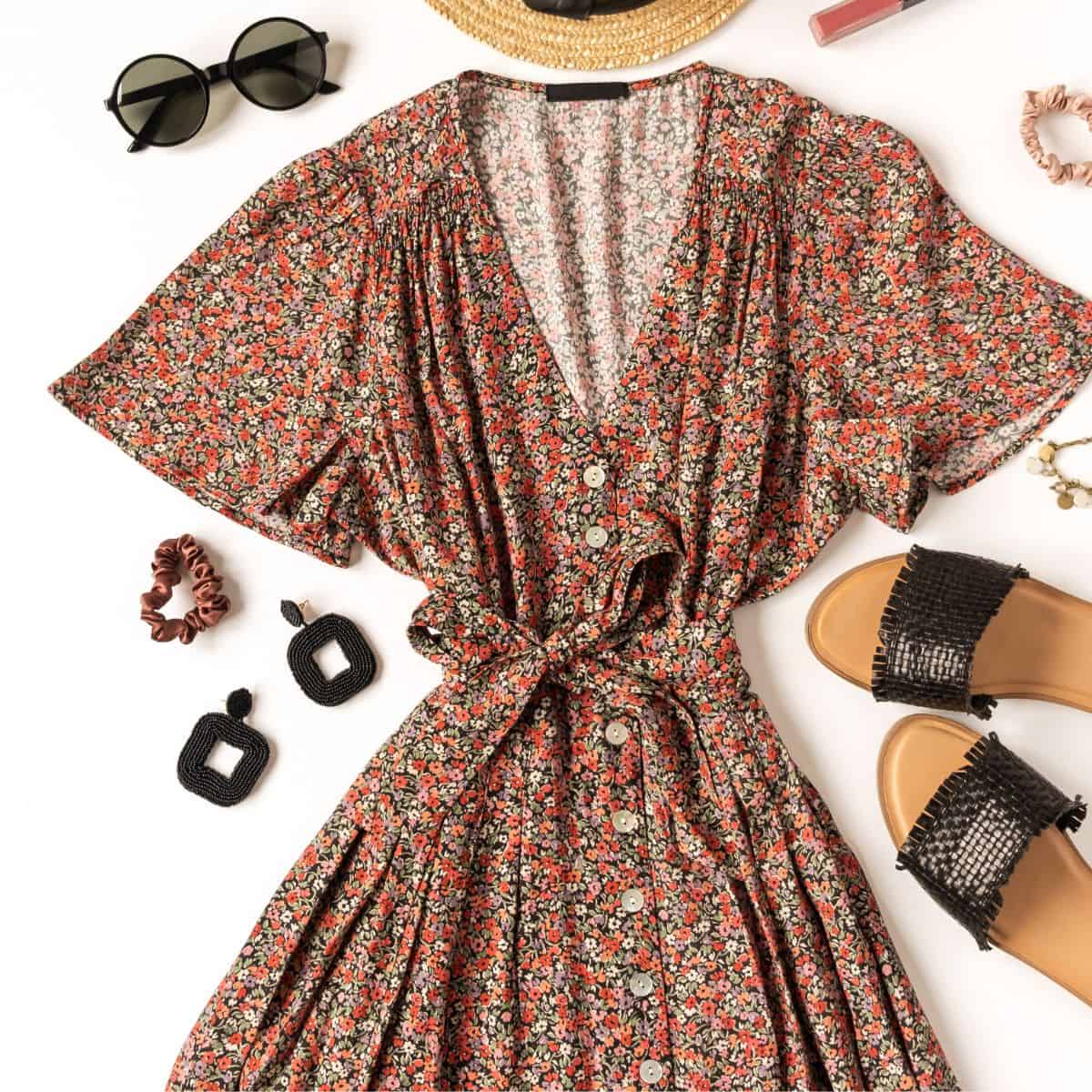
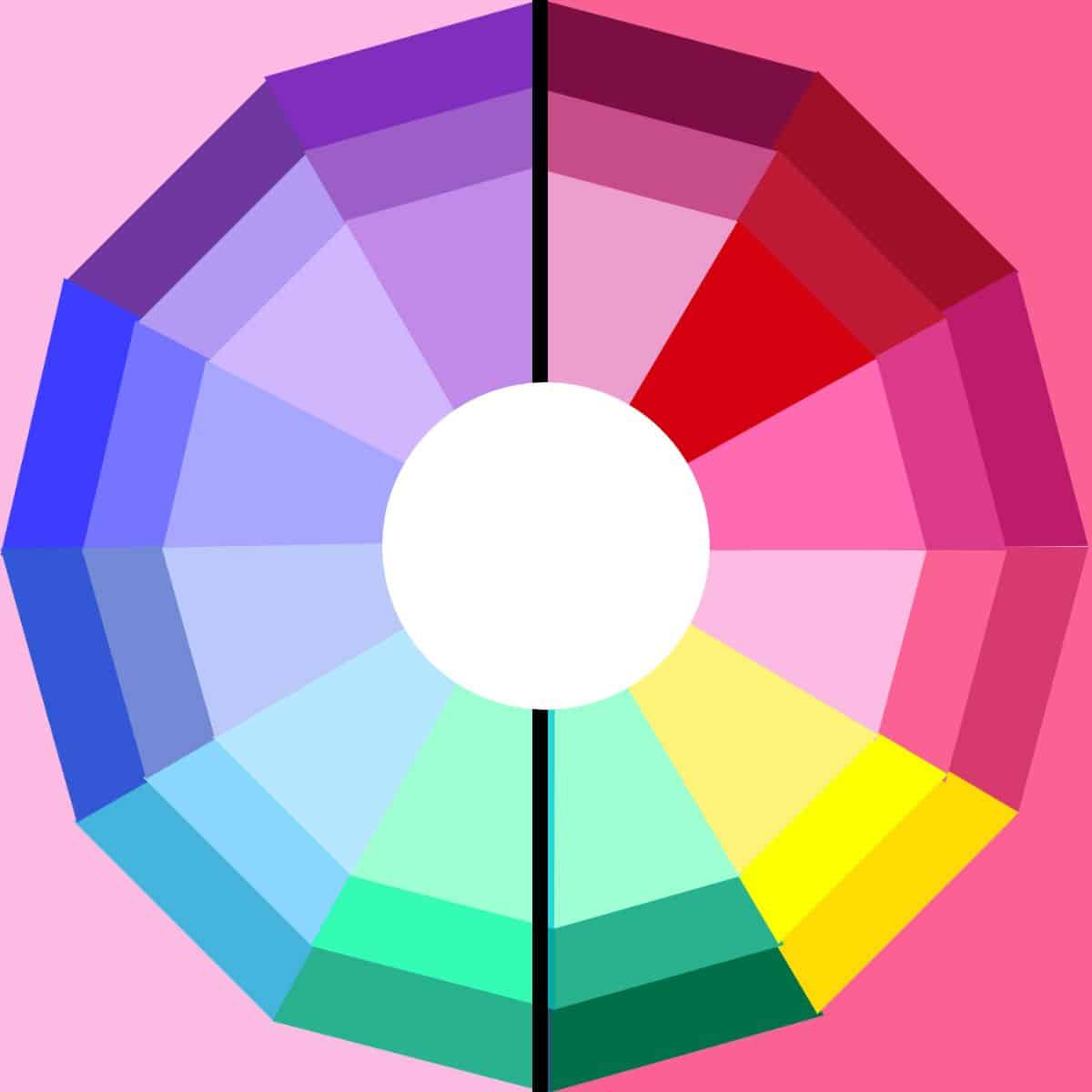
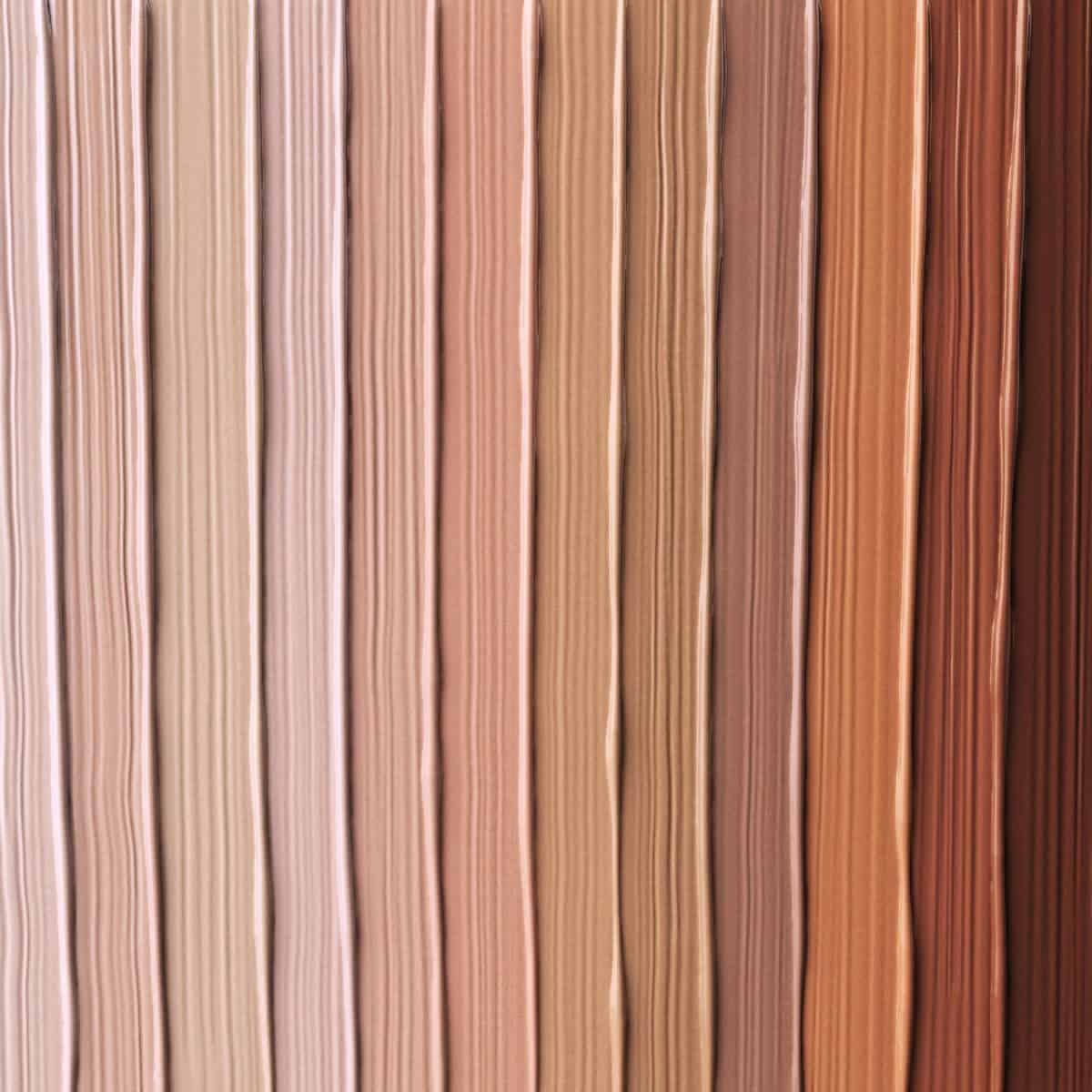
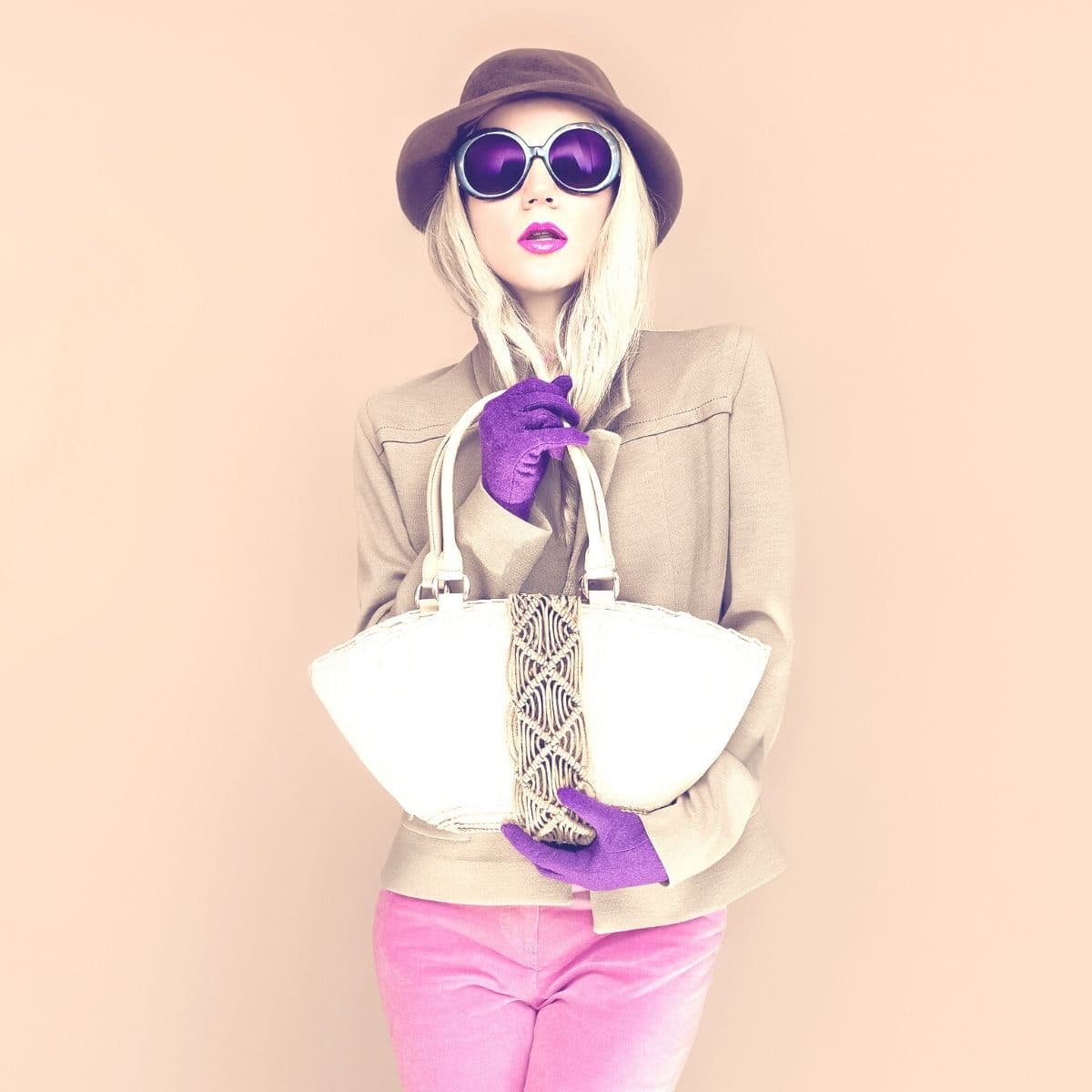
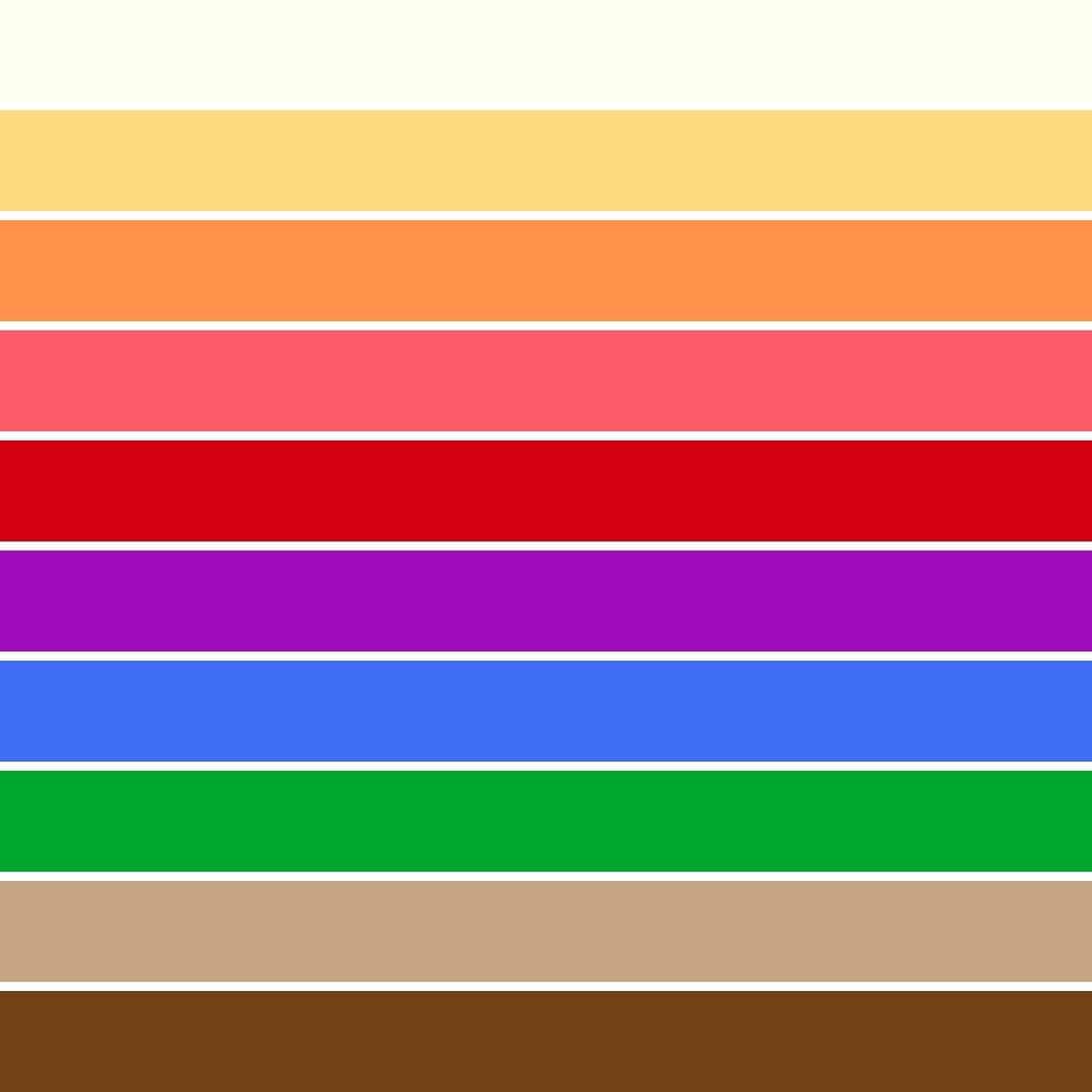
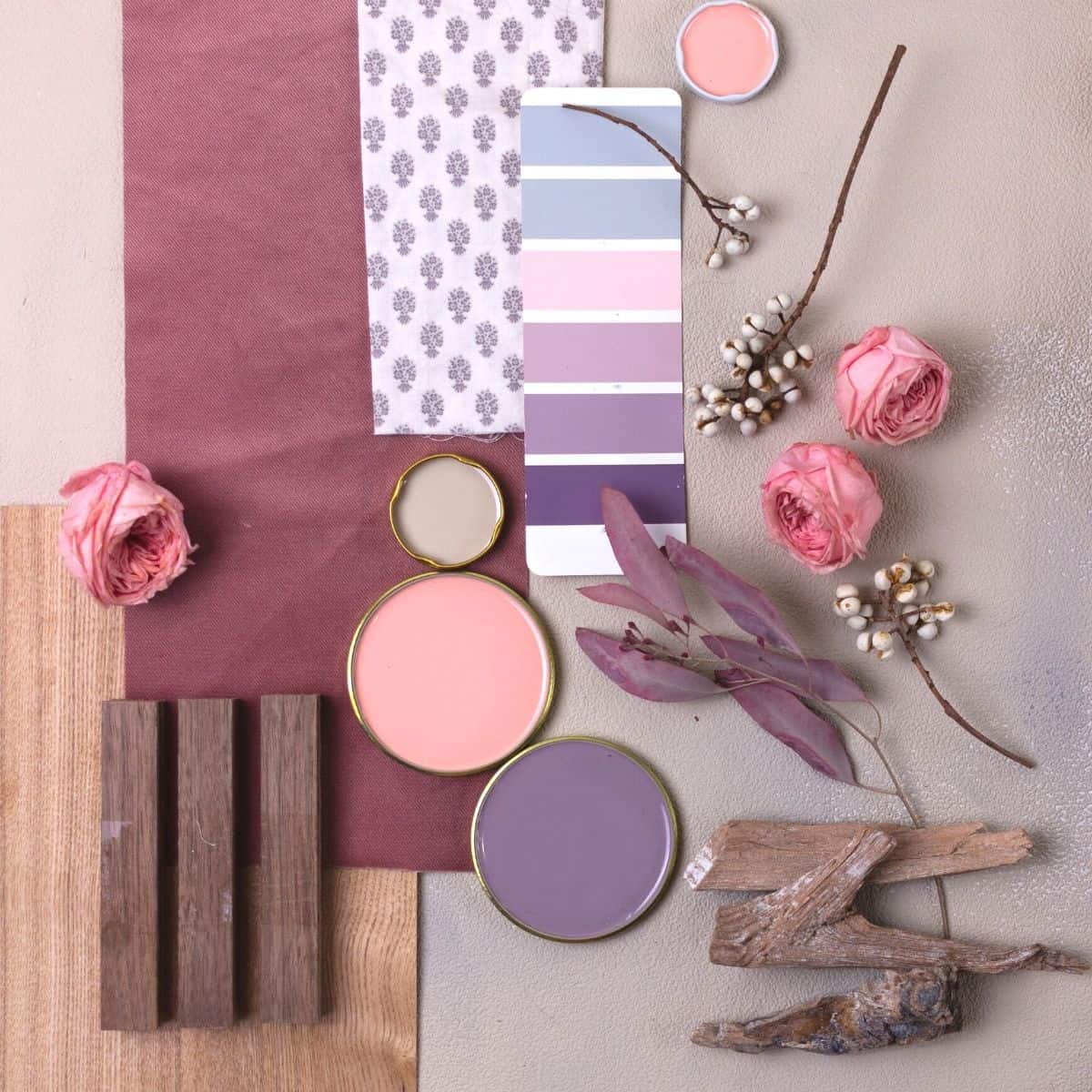
What do you do if you are bright, light and cool?
Hey Jonna! Bright, light, and cool is likely either light summer or cool summer depending on how much value you can handle! Spring leans toward bright, so light summer may be a good choice!
I have dark brown hair with dark brown eyes and light yellow/olive skin (Puerto Rican) and look good in dark colors, jewel tones, brights and deeper autumn colors. What would that make me?
Hi Abby!
Olive skin usually ends up as a winter based on undertone and overtone. Without a complete analysis I’m just guessing but possibly Deep Winter!
Hello! It is obvisous to me I am muted, and then medium light with brown hair and mixed/green eyes. But my skin is neutral. Which color season would muted and light be?
Hi Julia, both soft autumn and soft summer are muted and can be light or deep. You will need to determine whether your need cooler colors like blush or warmer colors like apricot.
Cool light muted but m their is changing slightly and becoming dirty blonde
Hi, yes. It’s simple. Must be deep autumn.
Hi! I identified my main characteristic as bright but I’m not sure if I’m more warm or cool toned. I have dark brown hair and eyes but I can never tell with my skin because I have a lot of warm toned freckles. I feel like my underlying color is more cool toned (veins are blue, burn very easily, never tan) but then I have warm brown freckles all over so it throws me off. Any help would be greatly appreciated, thank you!
Hi Callie!
Freckles do not automatically make someone more warm than cool. It’s the underlying tones of the skin. If you feel more cool then that’s probably correct! I am a Clear Winter with freckles 🙂
Hello! I have a cool hue, dark value, and muted chroma. May I know if I’m a winter season?
I am Asian Chinese with dark-brown hair and eyes with a medium skintone. I look great in silver, dark and muted colours.
It’s mostly likely you are Deep Winter given those descriptions 🙂
Hi! I’ve spent two days deeply analyzing myself.
I have brown hair that is a neutral medium-dark brown. And brown eyes that are not the darkest but not light either. Just brown with both warm and coolness to them. My skin is light with neutral cool undertones. Everything says I should be a deep winter but I draped myself with multiple colors and all the muted ones of summer/spring tend to be the most flattering, while the saturated ones overwhelm me. Is it possible to be a soft summer with darker features?
Hi Katy, Absolutely! Deep winter is much higher contrast, and if that feels off, the deeper shades of Soft Summer may be perfect for you!
Hi Abby,
I’m 64 years old and have never been able to figure out my color pallet. When I was younger, I had brown hair with reddish and blond strands that came across as dark brown in photos. I have fair skin that appears warmish, but I have blue veins. I think I look better in silver jewelry than gold, but the best for me is when I mix silver and gold. I know I’m not a winter. Cool white looks dreadful on me. I used to look good in clear reds, but now I’m not so sure.
I currently have white hair, but it has a pearly white appearance, not a cool white. I have grey/blue eyes, but confoundingly, I have a yellow ring around my irises.
I look good in most turquoise and coral shades. I also look good in rust, sage green and other greens, tans that are not too light and wash me out, browns, and clear colors. But I can also wear some muted colors, such as dusky rose. I can even wear a light lime green of the right hue and can wear some colors that others cannot wear that tend to be on sale.
I think my best grey is a medium cool shade without a lot of yellow and not too light.
I do not look good in winter colors at all and have a love/hate relationship with black. Sometimes I think it looks great; other times I think it makes my skin look full of shadows. I think it depends on the shade. Shinier blacks work best.
I can wear medium denim blue near my face.
I tend to gravitate toward browns and Spring colors since those are what used to look good on me, but I wonder about them with my white hair. I now wear pearly whites near my face, which I never did before, but any whites or creams that are yellowy look awful.
Would you be able to direct me? I often buy colors that I regret buying and have found it hard to put together a cohesive wardrobe with the right neutrals.
Thank you so much!
Susan
Hi! I’m Fairuz
Could you help to determine my personal color because I have some struggle to knowing or determine my value, chroma, and depth.
I’m a southeast asian with natural black hair and eyes. I’m pretty sure my hue/undertone is neutral, but not really sure if it’s the neutral-cool or neutral-warm one?
I ever asked my friend about my personal color that she said I might be have a warm tone but looks more flatter in cool colors. My skin tone itself is not the fair or light one, but not in the very dark either, it’s more like medium brown/sandy beige with a blueish-gray and a bit yellowish in some condition. In the sun, i burnt one and go tanned later. My daily color clothes that I have were the deep cool one with some black more outfit like.
I’m pretty sure that I won’t looks good in muted or soft color, or any color that have really light or white-ish color, but I’m going pretty well in bright vivid color in black-ish or dark accent. I ever wondering my personal color itself and might thinking that if my colors was a deep/dark autumn or deep/dark winter, what do you think about my true colors one? Or perhaps I’m going wrong and more suited in spring or summer color?
Please let me know, thank you! ^v^
Hello Fairuz,
I teach how to determine undertone and more in the DIY Color analysis course. It will teach you new ways to determine these areas for good.
Hi!
I’ve been searching for so long to know the looks that will suit me best😭
I think I have warm undertones in my skin- with that, my hair and eyes. Also slightly muted tones, and deep colours often look nice on me.
But I’m torn between having deep winter colours, some kind of summer, or maybe neither?
It would be really helpful if you could give me an idea on what to look for, thank you.
Hey Gianna, based on what you said I’d encourage you to explore Soft Autumn first.
I can’t tell if I’m more muted or more light?
I’m cool on the light value with medium chrome. I’m a summer but don’t know if that’s soft light or true??
Hi, Jennifer, both light and cool would be an option. It comes down to whether or not light is more important or cool. If you have any warmth likely light sumer.
Hi
I have a warm hue and bright chroma. But I could not differentiate value. I’m lighter for my ethnicity but I have deep contrasting features with dark brown eyes and brown to black hair. Do I fall under warm spring or warm Autumn?
Hi Pravallika,
Bright chroma is most definitely going to put you in spring over autumn.
Stacey